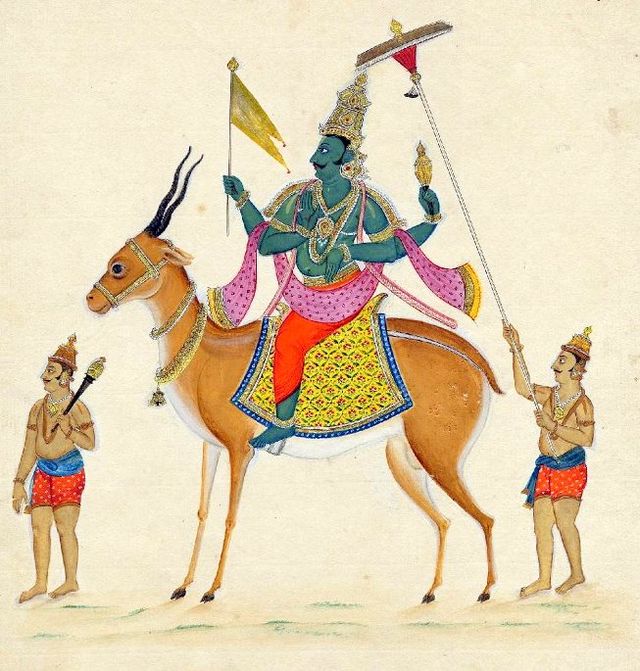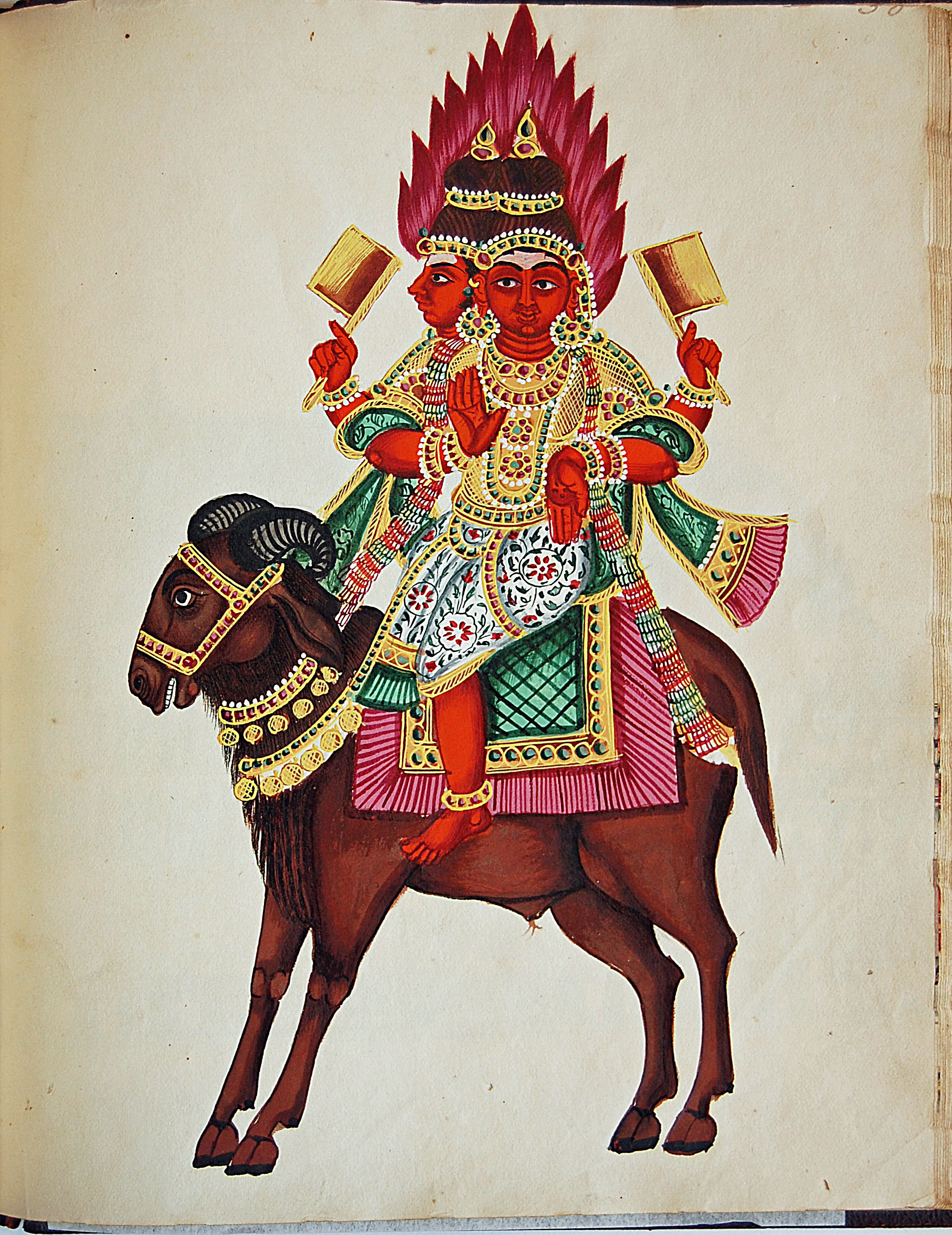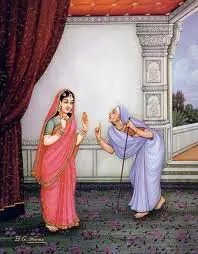Onto present day, and back to Vayu, he had just witnessed the heart breaking scene of Ravana carrying Sita, on a slab of dirt, into his court. She was very distressed, and was calling for him to return her to Rama before he sought the demon's death. Ravana was amused by her threats, but was quickly becoming annoyed. He ordered that an entrapment of sorts be made in the garden, directly outside the biggest window of his bed chamber. Vayu observed all of this unseen, for he had the power of invisibility, and went to tell his friend Agni (the fire god) about the situation. Once he had Agni convinced that their salvation was near, Vayu went to observe what the kingdom had to say about Sita's presence.
Much to Vayu's surprise the kingdom was in quite a stir. The many consorts of the King were growing concerned that Ravana would grow tired of them, and banish them back to their homeland. The demon army was growing excited, for it had been many years since Ravana took them out on raids to overcome the many gods on Earth. Vibhishana, Ravana's younger brother and advisor, was growing anxious over his brother's well being and began plans on how he could convince the King to surrender to Rama.

(Source)
Once Vayu was done listening to the opinions of the Lanka, he decided to pay Sita a visit. He made himself invisible at first to see what kind of environment and situation that she was in. There were some fearsome looking rakshasis' surrounding her around the clock. They were trying to convince her to just give in to Ravana, to forget about Rama, and that the demon King would be able to please her for an eternity in ways that her human husband wouldn't be able to. After hearing this for a little while, Vayu decided enough was enough and sucked the breath out of their bodies temporarily. He made himself visible only to Sita and reassured her that if she continued to refuse Ravana that she would remain safe. He gave her a secret signal (only known between the two of them), so that if she ever needed anything he would be able to bring it to her, or he could determine whether a messenger is telling her the truth or lies. This is how Sita kept her determination while waiting for Rama throughout the next rainy season and year. Anytime someone would try to deceive and lie to her about what was going on, even when the demons tried to bring her what appeared to be a decapitated Rama, Sita would always wait for Vayu's signals on whether or not her audience was telling the truth. Vayu's son, Hanuman, was a devotee of the great Rama, and the human king-to-be would be the one who was going to grant him salvation. The least he could do is aid Sita during her time in the demon kingdom.
Author's Note:
Since the wind god is able to be in all places as once (or least I depict him in this way), I decided to try and make a part II of the story I wrote last week [3]. Since Narayan's version of the Ramayana doesn't give readers much insight on how Sita's stay was like in Lanka, and how she survived, I decided to give Vayu the credit. Since Vayu is known as the wind god, I really emphasized on his abilities of being all-seeing and how he can be perceived as in many places at one time. I thought it would be interesting to make a continuation of last week since someone commented about how they would like to know more about Sita's capture.
I am aware that we are put into different "comment" groups each week, and those who I will be paired with will be different from last time. Even though I tried to continue from last week's story, I tried to catch the reader up so they didn't feel like they were missing out on anything. For my new readers, please don't hesitate to point out if I made anything confusing, I'll gladly try and make them clear!
Bibliography:
Narayan, R. K. (1972) The Ramayana.





._Bharata_and_his_army_cross_the_Ganges(recto)..jpg)
















